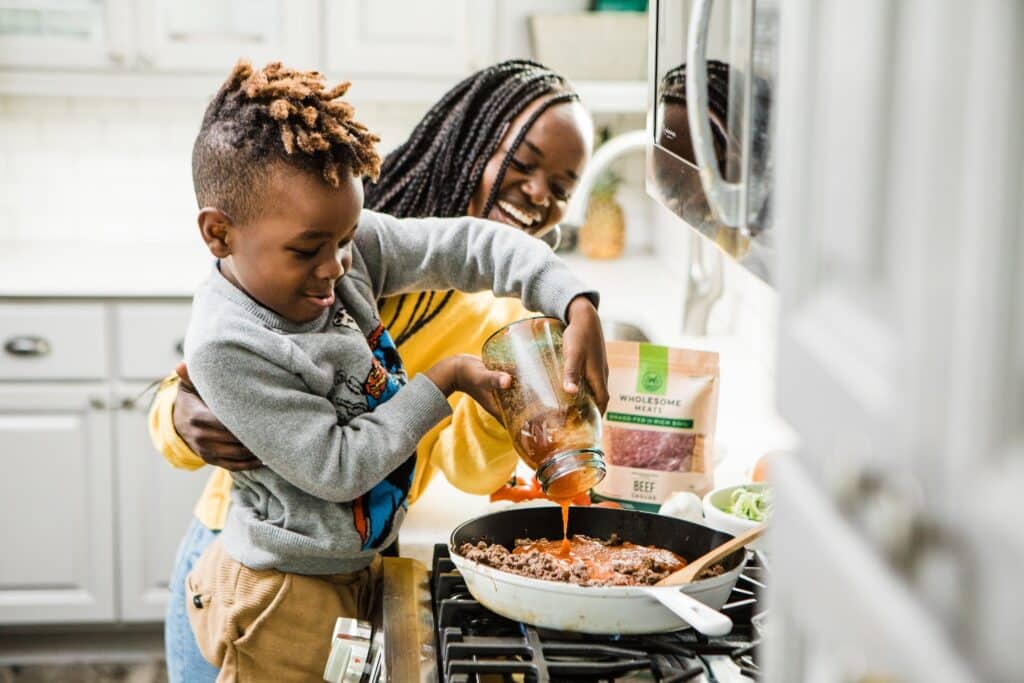As the holiday season nears, many of us have traditions, old and new, that we enjoy with our families and many of them involve food!
Whether hosting a holiday party, bringing a dish or dessert to a gathering or giving food as a gift- we may find ourselves cooking or baking a bit more than usual this time of year. Although we often feel short on time around the holidays, involving our kids has so many benefits for the whole family!
As OTs, we consider cooking an occupation, specifically an Instrumental Activity of Daily Living (IADL). Cooking is a multi-sensory task that, when broken down into a task analysis, can involve sensory integration, fine motor skills, bilateral coordination, hand and upper body strength, motor planning, reading, math, problem-solving, impulse control, sequencing & more!
Regardless of your child’s age or skill level, there’s a benefit to involving your child in the kitchen. You can involve your child using your discretion to address skill areas, but most importantly to spend time together, continue or create new traditions, and make memories together.
Do you have a picky eater? Involving them in the kitchen can aid in food exploration, systematic desensitization, and interacting with food without any pressure to eat. Take time to discuss the foods. Identify textures, colors, and smells, and discuss the properties before it’s cooked instead of what it looks, smells, feels, or tastes like afterward. Cooking and eating are great sensory experiences for both children who are sensitive to or seeking sensory input. Check out our post, Say Yes to The Mess for more on the benefits of getting messy in the kitchen, too!
Working on upper body strength and fine motor skills? Cooking is a great opportunity to scoop, measure, pour, open and close containers, squeeze, mix, scrape, push, roll, and more! Use a rolling pin to work on bilateral skills, such as grading force (proprioception) and upper extremity control. Use cookie cutters for more fine motor work. Citrus juicers are great bilateral and strengthening tools while also providing proprioception! Adding raisins, chocolate chips, or nuts? Give your child a small handful and ask them to add one piece at a time into the bowl. This is a great way to incorporate palm-to-finger translation!
If your child struggles with motor planning, cooking is an excellent activity. Beginning with ideation (coming up with an idea of what to make), kids will then organize, prepare, sequence, and execute each step, including clean-up.
When you follow a recipe and create something together as a family, you address many higher-level skills, such as motor planning, executive functioning, time management, safety awareness, communication, math, reading, and more.
This is a time of year when slowing down, being home, and spending time together has so many benefits. From time to time, incorporate cooking activities into your weekends and have some fun with it, too!
Written by Sara Pereira, OTR/L

